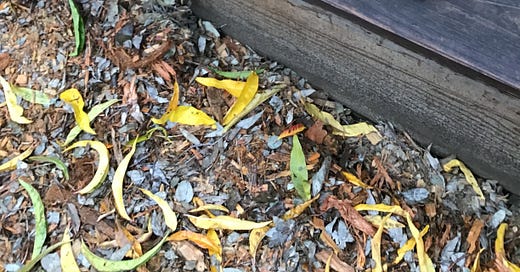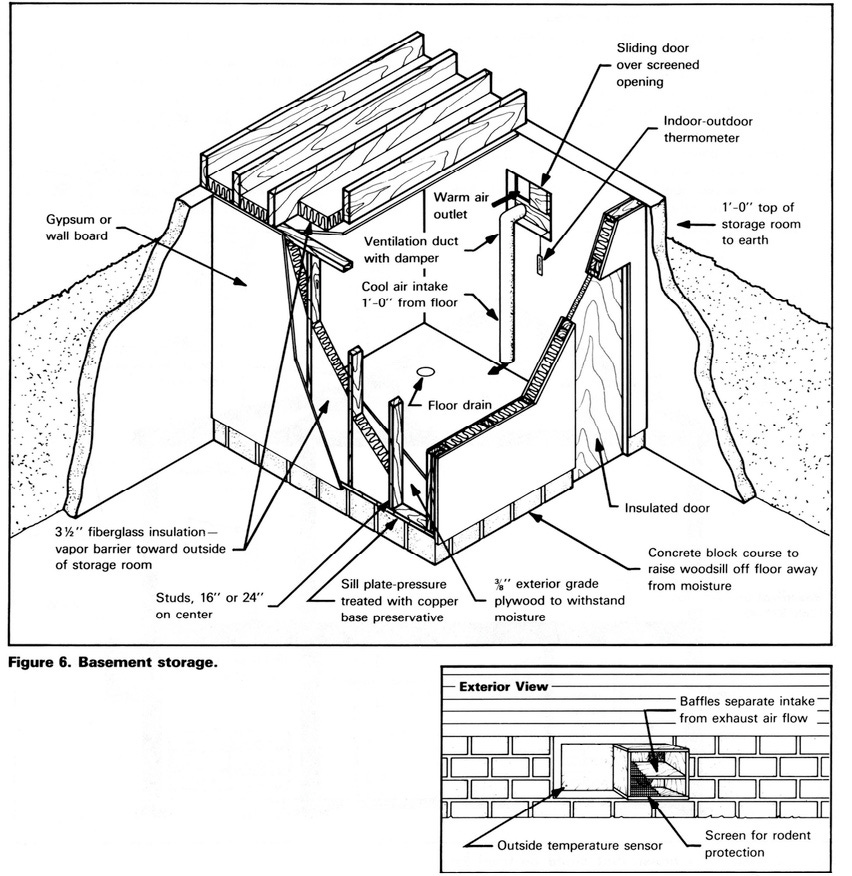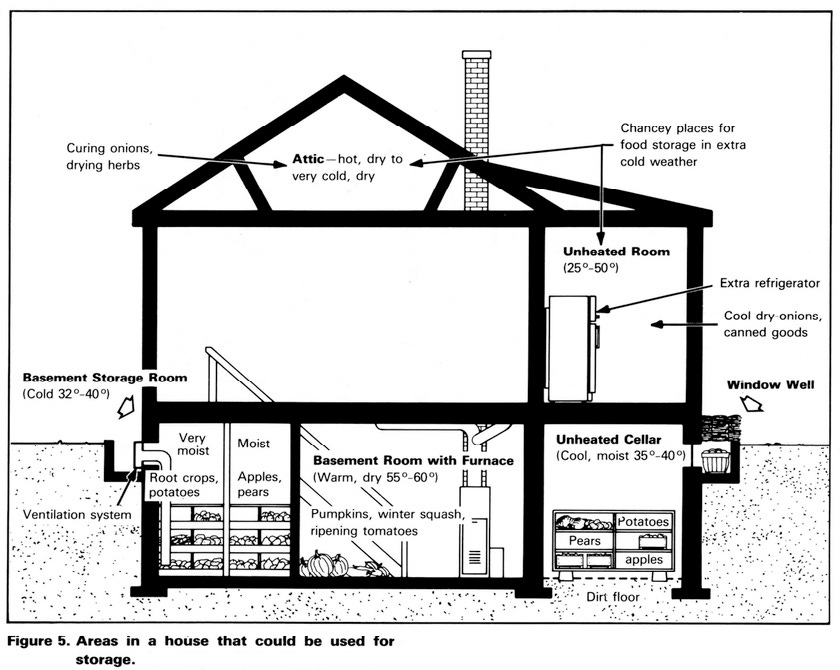Backtiming Your Tomatoes. Apple Storage.
A deeper dive into Episode 158 of the Garden Basics with Farmer Fred podcast, "Life Is Too Short to Put Up with a Problem Plant". Including how to get tomatoes to ripen before the nights get too cold.
I have several working titles for Episode 158 of the Garden Basics podcast: “Know When to Hold ‘em, Know When to Fold ‘em”; “Should It Stay or Should it Go”; and, “Life is Too Short to Put Up with a Problem Plant”.
It truly would be one weird radio station or music service that would dare play back to back Kenny Rogers’ “The Gambler” and the Clash’s “Should I Stay or Should I Go’. On the other hand, “Life is Too Short to Put Up with a Problem Plant” sounds like a perfect song for Guy Clark. Or Townes Van Zandt. Or Nick Lowe. Or the Bonzo Dog Band. Probably the strangest segue I pulled off in 50 years of radio was Spade Cooley (“One, Two”) and Los Straightjackets (“Treat Her Right”). Pure art. Oddly enough, it was on a garden show. But, as usual, I digress.
One radio craft that served me well over the years: the ability to backtime into the network news. That is, as the top of the hour approached, choosing a song that would end at exactly 59:50, leaving room for a ten-second station ID followed by whichever news feed would hit at straight up :00. ABC, NBC or CBS Radio News. Or Mutual. Or, if you worked at a minimum wage station, AP News. Disc Jockeys could show true mettle by choosing a song that ended cold (an abrupt ending). DJ’s who chose to play a song that faded out were being lazy. Real DJ’s End Cold. That’ll be on my tombstone. Oh, wait a minute, we already paid for cremation. Garden ashes!
You, too, can practice the craft of backtiming, in your garden. No one wants to fret about those green tomatoes, tiny zucchini, miniscule peppers, or little beans as Autumn begins. Will there be enough heat and day length for them to ripen? Probably not. Sure, you could take those tomatoes, stick them in the garage, wait a few weeks, and voila! Hard, reddish Better Boys and Early Girls with all the flavor of a grocery store tomato. Yum. Refer to Episode 152 for more information on ripening not-quite-red tomatoes in October, November and December. And yes, I, too, will go to such measures for an Instagram moment:
In Episode 158, our favorite retired college horticulture professor, Debbie Flower, offered up a way to backtime your tomato plants to insure that all will be fully ripened on the vine, for maximum flavor and nutrition. Here’s the transcript, taken from our wide-ranging discussion about too many different things. But, that’s OK.
Farmer Fred
You have an interesting technique for maybe getting them to ripen out there. So prior to pulling your warm season plants, you talked about basically kind of stripping the plant.
Debbie Flower
Yeah, but it's quite a bit prior to pulling the plant. If your plant says, and you would know this by the type of plants you have, it'll be on the seed packet. They'll say, or it'll be in the seed catalog, it will list the type of tomato, the name of the tomato, and then they'll say 70 days. And that means from the time you put the plant in the ground, it'll be 70 days until you get a ripe tomato. So if it's a 70 day tomato, then you have to guess when your night temperatures are going to drop to settle at 55 and count back 70 days from that. Oh, and that's when you would start this process of removing flowers from the plant so that it doesn't set any more fruit and the ones that are left on the plant will ripen fully.
Farmer Fred
Boy, I hope you have a growing season of 140 days. Sad to be cutting back a plant before it had a chance to mature, right?
Debbie Flower
Frankly, I don't know that anyone would do that, there's always the hope that you're going to get more fruit and you will get more fruit. And even if it doesn't ripen, we know there are things you can do with the green tomatoes.
Farmer Fred
And there's something called sink priority, which I always thought was, "Yeah, the wife gets the sink in the bathroom, I'll go find someplace else." What does sink priority mean?
Debbie Flower
Sink is the place where the plant sends the food that it makes. It makes the food and all the green parts and then the food sinks somewhere. It travels around the plant and it sinks or ends its travels in a place where it settles, and those places are growing points: flower buds, fruit buds, and ripening fruit. And there is a priority in the plant over what gets the food that the green parts are making. And fruit is a high priority. Fruit needs to be fed to get a lot of food into it. And flowers are a high priority. So if you have existing fruit on the plant and flowers, then you want to convert your sink, you want to skew the sinks toward the fruit so that you get as much ripening out of the fruit as possible. So that would mean picking off the flowers. I would not pick off new growth, because picking off new growth stimulates the plant to make more new growth. Typically, if you take off one stem tip, you're going to end up with two or more. So you've actually doubled your sinks there and taken more food away from the fruit. So I wouldn't touch the growing points. I would just remove the flowers. You're just pinching off the flower.
Farmer Fred
And probably the best time to do that is mid morning.
Debbie Flower
Yes. The plants make food during the day, then they move it around at night and make other chemicals at night. All the plant parts have the most sugar in them the most plant food in them early in the morning. So that's when you would take the flowers off.
Farmer Fred
Alright, and I imagine immature fruit as well, right?
Debbie Flower
If it's small, and it's doesn't have a chance because you're going to hit your cold nights in the next two weeks or three weeks, it doesn't have time to ripen or mature, get to a good usable size, whether you want to use it green or red. If it doesn't have that time, then take it off.
Farmer Fred
And again, this would be true of melons, squash, peppers, tomatoes, and beans.
Debbie Flower
If you wanted to grow a giant pumpkin, one of the things you have to do all through the growing season is remove secondary fruit, because you want all the food to sink into the giant pumpkin, not into these other fruits.
Farmer Fred
And why you would do that? Well, I'll tell you, you'll do it once. And then you realize it's much easier picking up a 30 pound pumpkin than a 100 pound pumpkin.
Debbie Flower
We did it once at school with students. And then yes, we got a 250 pound pumpkin but it's like, "Now what do we do? Yeah, it's out in the backfield. How do we get it out of here?"
Snow Can Be a Gardener’s Friend
How so? Debbie Flower lets us know, also from Episode 158:
“And if you get snow, snow is an insulator, snow will cover the ground and it's actually a wonderful insulator, it's better to have snow in a cold climate, it's better to have snow on the soil than to have bare soil when temperatures get below 32 degrees Fahrenheit. It is better for the plants in a cold climate to have snow on the ground when the temperatures get below 32 degrees Fahrenheit than it is to have bare soil. Because the bare soil can, if it's exposed without snow can get down below as low as the air temperature gets. If there's snow on the ground, the air temperature can get down into single digits but the ground will remain at 32 degrees.”
Storing Fresh Apples Successfully for Several Months
The healthiest food you can eat is the food you grow yourself.
Part of our conversation with Debbie included discussing the best apples to grow for long storage at home. And, we delved into a rather sore subject: Grocery store apples. Don’t get me started! Where’s Confucius (“Eat fresh and local; do not eat food out of season”) when you need him? If you want the tastiest, most nutritious apples, you want them fresh-picked. Not sitting in cold storage all winter and spring (and summer), where they suffer through the indignities of who-knows-what sort of chemical treatment (can you say, (“1-methylcyclopropene”?) for up to a year. Apples are freshest and healthiest from late summer through fall, period.
OK, you can fudge a bit on apple harvest season, if you plant several apple varieties with different ripening times, from June (“Yellow Transparent”, “Dorsett Golden”) to October-November (“Pink Lady”, “Granny Smith”).
Of course, you can preserve your apple harvest in many forms, including freezing slices, mashing into a sauce to can or freeze, or dehydrating apple pieces for a healthy snack throughout the winter. (Get a dehydrator. Honestly. Get a dehydrator). But if you want to preserve whole apples for several months, here are five reputable sources from four different major apple growing states (Iowa just dabbles in apples, between corn and soybean harvests) with more information:
University of California (UCANR): “Apples: Safe Methods to Store, Preserve and Enjoy”
Michigan State University: “Extend the Apple Season - Try Home Storage With Apples”
Washington State University: “Storing Fruits”
Iowa State University: “Harvesting and Storing Apples”
University of Minnesota: “Growing Apples in the Home Garden”
But, my choice for “Deep Dive of the Week” goes to this 12-page, 1978 Publication from Washington State University: “Storing Vegetables and Fruits at Home”, which includes diagrams like this, for converting a portion of your basement into a food storage area:
Or, convert your whole house!
No basement? No snow shovel? The good news is, they offer a much easier solution for keeping your harvest:
“If you will be storing only a small amount of produce, an old refrigerator placed in one corner of the basement may be an excellent investment. It can be used for storing head lettuce, cauliflower or cabbage, or apples.”
So, there’s that.
Thanks for Subscribing and Spreading the Word About the Garden Basics with Farmer Fred newsletter, I appreciate your support.
And thank you for listening to the Garden Basics with Farmer Fred podcast. It’s available wherever you get your podcasts. Please share it with your garden friends.
Fred Hoffman is also a University of California Cooperative Extension Master Gardener in Sacramento County.






